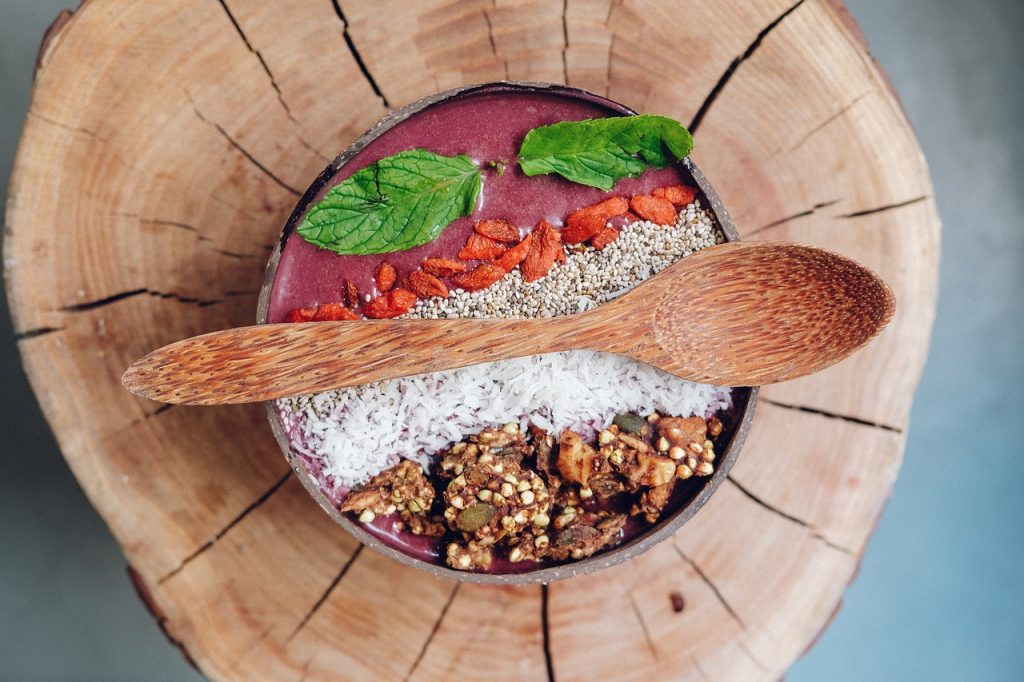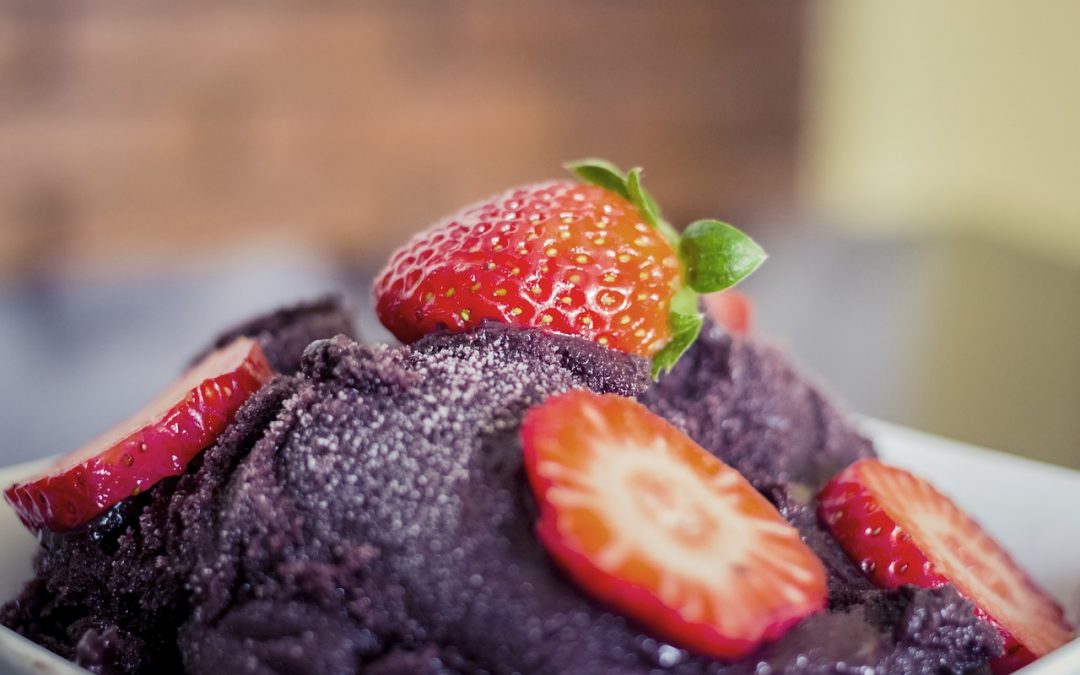Acai – the superfood from Brazil. Many people are having Acai bowls for breakfast or lunch now and it’s not just a health craze. So where does acai come from? These purple berries are found on palm trees deep in the Amazon which can grow up to 3 metres high and are handpicked by local people. Acai berries have been eaten for thousands of years but are relatively new to the Western world. Here’s our guide to what acai berries taste like.
Background to the Acai berry
Acai palm trees bear fruit in clusters under broad leaves. People have to climb these tall palm trees to harvest big bunches of these small, grape-like berries that look like beads from the ground. The berry pip takes up about 70 percent of the berry mass, which is removed before eating.
These berries are then soaked in water to soften the flesh and skin so that the pip can be removed more easily. The Acai berry has been a staple part of people’s diets from Brazil to Peru since recorded history. While people tend to blend it with other ingredients into a smoothie drink or a smoothie bowl, traditionally it’s eaten with fish, game meats or by itself as a soup.
You can buy Acai in powdered or frozen form in all parts of the world today.
What is the texture of Acai?
The Acai berry is quite granular in texture, but that changes when it’s blended in a smoothie or a bowl. Pureed Acai berry is very smooth and creamy so it reminds some people of a sorbet or ice-cream due to its thick and rich texture.

Acai taste
Acai has a much more earthy flavour compared to most other berries that are sweet in flavour. It’s been described as slightly tart with an earthy backbone, with notes of raspberry, pomegranate and a pinch of dirt. The Acai berry is also high in acidity which makes it good to pair with sweeter fruits, honey or other sweeteners.
Other people describe the taste of Acai as a cross between rich blackberry or raspberry and a piece of chocolate. The earthy after-taste gives the fruit this chocolate flavour. The chocolate flavour may be due to the polyphenols, which are present in both Acai berries and cocoa beans.
Polyphenols are a compound naturally found in food such as fruits, vegetables, tea, dark chocolate, herbs and red wine. They act as antioxidants to neutralise harmful free radicals, which if weren’t neutralised would damage your cells and increase the risk of conditions like heart disease or cancer. Polyphenols are also believed to reduce inflammation.
Here are some other words people use to describe the taste of Acai:
- Rich
- Grainy
- Tropical
- Refreshing
- Bitter
Is Acai sweet or sour?
It’s actually more bitter than sweet or sour which is why it’s common for people to add sweetener or other fruits to balance the flavour. Acai can be an acquired taste for some people because it’s not something they are accustomed to, so it’s not often eaten raw. Acai is also hard to transport so it has to be properly frozen before being transported across the world from the Amazon.
What do you eat Acai with?
If you haven’t seen Acai bowls all over Instagram, then have a look. A quick search will show you there are 1.4 million posts under the hashtag #acaibowl which has boosted its popularity immensely.
Acai bowls look like ice-cream but is a much healthier breakfast choice. There’s an endless amount of toppings you could add to an Acai bowl but popular ones are granola, fruit or peanut butter. Not only will you feel good after eating it but it’ll give you enough energy to start your day off.
Acai at home
Acai can be found at most smoothie and juice bars, especially in bigger cities but can be also made at home. There’s a tonne of recipes for Acai bowls and smoothies online, plus a countless number of YouTube tutorial videos.
The trick to making it yourself is getting the texture right. The Acai puree should be thick enough to scoop but should be completely blended without any chunky bits. Sometimes adding other ingredients helps to get the right consistency, such as frozen banana, frozen strawberries or coconut water.

